

Scouting for Elk
Much of the elk hunting literature is just too general. It is written to cover the entire United
States. However, there are several subspecies elk which live in different environments and under
markedly varying human-changed living conditions. The human influences change seasonally
with ranching, recreation, and several hunting seasons. Consider whether you would hunt white
tail deer in Texas scrub land the same as in a Vermont forest. You should not expect to hunt elk in
a wilderness where elk rarely see people in the summer the same as on a working Wyoming
ranch where elk become accustomed to horse riders and activity? Animal studies disclose that
mechanized hunting affects elk movement far from disturbances. Ignoring the hunting
environment in published articles is paramont to setting eager hunters off on a wild goose chase.
The following discussions supplement the elk scouting section in my book.
Big Bull Lair Found While Scouting (2014)
Everybody wants to luck into a big Bull, but few want to do arduous, time-consuming scouting. I
green, first growth grass to more dry, fibrous second-growth grass. The branches the bull raked
from the scrape tree had hardened, butfound an excellent site this year largely by using my nose.
It was not hard to identify where the bull had been, nor why he was there. The location was NEAR
the top of a large broad funnel-shaped eastern facing slope void of trees. From there the the bull
to see bear and lion predators who may have followed his scent trail up the survival instinct-
made diagonal elk path up the hill (called a "J” turn maneuver). The branches the bull raked from
the scrape tree had hardened, Any rogue elk bulls trying to cut out cows could be immediately
seen by the master bull. The location gave the herd bull the advantage of charging down slope
and conserving energy for any fight. The high observation post also permitted the bull to see
bear and lion predators who may have followed him up the survival instinct-made diagonal elk
path up the hill (called a "J-Path).
Big Daddy's Scrape. The location of the scrape tree was ideal. It was located on one side of a
bench overlooking not only the down slope, but also along an upper bench grazing and bedding
area for the herd cows he wished to monitor. The scrape's five clumped trees gave the bull shade
for cool lingering. Shade is critical to a bull. Because bulls have a greater body mass, it is harder
for them than cows to keep cool. The trees also gave cover from predators.
Elk Treats.Have you ever noticed in hospitals the
food tends to be salty? Remember the doctors
advising you to drink lots of water when sick? A
herd bull spends a lot of energy taking care of the
cows that choose him, and running off interloper
bulls. He sweats much, and this eliminates water
and salt from his body. He needs to replenish both.
Fifty feet from the scape/stand trees was a recently
well used sheep herder salt lick. What a nice place
to wait out the day, get a few salt licks now and
then, cuddle with a cow in estrus, spar with the
boys if necessary, and see his cow bevy also come
to his claimed salt lick. Sort of like an iced beer
cooler on a tailgate on a football Sunday!
Substitutes Urine Wallows. In friable dirt just a
few yards from the salt lick was a bull urine pit.
Bulls like to "scent mark" themselves so all of
creation can identify them, and to mark their
territory against intruders. They usually dig new
wallows in marshes with their antlers to urinate in
and then roll in, or use old wallows left from
previous years. However, where there is insufficient
water they urinate in the same place. Soon the soil
is soft and urine-saturated. The bull then stomps in
it and mish-mashes the mud like an ancient brick
maker. The first urine pit photo shows the pit at
this location with large bull elk hoof prints. The
second photo is a urine pit on a Wyoming
mountain where the lack of water makes
wallowing unfeasible without using the urine pit
technique.
The urine pit was dead-ugly rank! At least 100
times more offensive than a clogged urinal at the
worst truck stop. I smelled it perhaps 500-700
down-wind yards away and "nosed in" on the site. I
have no doubt keen smelling elk could smell it a
mile away. I absentmindedly placed my backpack
near the pit for photo scale and could smell the
odor for several days. Why do I learn so slowly!?
When Was
the Bull at the Scrape? Many well-formed "pit
and cone"
fecal pellets littered the ground around the
scrape tree.
(My observation is that elk do not usually
defecate
immediately in their beds.) This pellet type
forms late in
the summer when elk transition from tender,
green, first
growth grass to more dry, fibrous second-growth
grass. The
branches the bull raked from the scrape tree
had
hardened, but still had pliable pitch, and their
needles
were green but beginning to yellow. The tree
scars were still slightly bleeding pitch. All these clues indicated the bull had been here two to
three weeks ago, but generally healing pitch indicated recent disuse.
Was this a Scrape, Urine Wallow, and Herd Monitoring Station of a Herd Bull? I think so. The
bull-raked tree branches were from a good seven feet above the ground. I picked up a handfull of
scat. They were hollow and the whole handful did not weigh anything. They were unweathered
and like styrofoam balls. Obviously, this bull was in the exhausting part of the rut and in the non-
eating mode. He was trying to exist on a few morsels of bad grass and water. He was basically
excreting gas-filled fecal shells. However, cow pellets from the area were of typical density. I had
no doubt this was a large, dominant bull's lair.
A Trailside Feces Wonder: The stack of droppings suggests a very constipated bull who was
probably exhausted after defending his harem during the rut. (Why didn’t the stack tip over
when it landed? Another wonder of nature, trajectory, and physics.)
Did I hunt the location? I hunted this immediate area only one morning looking for a straggler
cow. One important aspect of game scouting is to monitor the kills made by others. When I
arrived for the second season, I heard that an outfitter client had killed a bull in the far side of the
topographic funnel during the first season. No mention was made of the elk rack size, a give away
that the bull had been somewhat mediocre. It certainly was not the large herd animal I expected
from scouting. It must have been a smaller bachelor bull that lingered in the area after the main
herd left. I deduced the bachelor bull would not have moved into the harem bull's area if the
dominant bull was still there. I figured it was better to hunt elsewhere.
Conclusion: So what happened this year to the herd bull and almost all of the elk we would
normally encounter? his summer was very warm and had frequent rains, especially in the early
(high country) fall period of August. Even by the second, late October, hunting season the
weather was the warmest I've experienced in 42 years hunting this area. Some nights the ground
did not frost, and never before did it actually rain at night. Although there were typical brief day
sleet and snow showers, many days were shirt sleeve balmy. There was water everywhere, so elk
had no reason to wander in search of it. The rut was probably early in this area. There were signs
of a few single and cow-calve paired elk still present, but no signs of recently herded animals. My
deduction was that the elk were agitated by the heat to the point that a few archers and muzzle
loaders (and a sheep herd) triggered them to move during early seasons. The elk returned back
into the back country where deep timber offered cool bedding and protection. The big fellow was
smart (and he himself rut and heat beat) enough to take his harem back to elk black timber
heaven.
Lots of Grass, But Why No Elk? Some grassy
fields look like prime elk habitat, but are not.
Dense waist-high grass like this would seem to be
an ideal elk forage location and a great place to
hunt, but it is not. Close examination of the grass
revealed that it is second growth grass. The grass
tussocks were chewed close to the ground in the
spring when the elk first migrated to high
pastures. This is an eastern-facing steep slope
where the sun would have first melted the snow
and made new tender grass grow. The elk left this
area and headed to the high back country for the
summer. The second growth of grass thrived in
the late summer rainy period. While the elk may
have returned to the area with fall snows, they
are not going to eat this seemingly luxurious
fodder. It grew fast, is coarse and is low in
nutrients. It is a last resort winter meal.
Of Salt and an Obviously Hasty Retreat: We
were camped south of Wood’s Landing in
northern Colorado. Each night a group of cattle
would stop at an elk hunter’s old campsite and
ravage the fire pit. With a lot of head butting
competition they eventually licked the site clean
of ashes and charcoal. Then the cattle headed
down slope to a spring to satiate their salty
mouths.
I’ll report anyone who baits game with salt. It is
illegal and not “fair chase” ethical. However, I do
recommend hunters become aware of all game
activities and movement habits by paying attention to natural favored foods and nutrients. I
check hunter camps while backpacking in the summer. I pick up any overlooked trash that may
have been snow covered when the hunters left. While doing that, I’ve noticed that fire pits often
don’t last more than a couple of years before stones are rolled apart and the ashes scattered. You
can see an game-eaten hole where the noodle water was dumped. Buried trash is exhumed and
scattered (that is why you should always carry out all rubbish). Like the cattle, game seeks
mineral nutrients. Food scraps dumped in the fire leaves salts. Check fire pits for game activity
when scouting. Try to determine which way the animals travel in the immediate area and make
notes for the next hunting season.
I surmise the elk hunter’s camp described above
was sloppy. The hunters must have been fire-
reckless and inattentive. It appeared that a fairly
large forest fire started when the fire escaped the
fire ring. The dudes must have made rapid retreat
to avoid detection; they left things - including a
lovingly made fancy latrine, tow straps and some
tools.
Scout Slowly: Elk can be hard to see if the wind is in your face and the
elk are lounging midday. It would be easy to overlook these two fellows
with a too quick binocular scan.
Scout Elk as if You Were Looking for Ghosts
I call elk the ghosts of the forests. You don't think they are present, then all of a sudden they
silently, mystically appear. These photos illustrate how easily two bull elk can hide and then
appear. They could be overlooked by a swiftly moving hunter scout as they lay midday in their
wallows.
Some highlights of my stay made my scouting and high altitude acclimation days happy. Two very
discouraged young lads asked me where to hunt. I told them to be down to buck creek at 4 PM
where a thicket of alder crosses the stream. Any remaining bulls would creep out of timber-
hiding to water early in the hot weather. I was hosting a sheep wagon dinner for two veterans
(one hunts on a tracked wheel chair) when there was a rapping on the widow. A very be-
spattered, grinning lad said “Thank you, thank you! I was there later than you said to be. I saw
that a hunter beat me, since there was a horse tied in the willows. Then it moved and some of the
branches moved with it head. Thanks for the 5X5 – my first elk!” It could not get better for me to
hear his enthusiastic thanks. [The young fellow will probably grow old there for the next twenty
years of 4PMs.]
Scout for Elk While Hunting Bear "With" Sheep Herders
Bear and mountain lions are multiplying in the Flat
Tops and other areas around the United States. You
may want to consider scout for elk in the early fall
with a bear license in hand. Ask locals about
predator situations. They are often bothered by bear
and are helpful in pointing out rouges. An excellent
and commonly overlooked helpful bear information
source is the person who makes a living all summer -
the sheep herder. All summer he moves sheep
through their assigned National Forest Pastures.
Every day he intently watches his sheep. He is one of
the few people who stand guard at first dawn and late twilight when predators are most active.
Herders come to know the animal "pulses" in the wilderness. They witness the game movements
over the summer as the rut develops and bears enter their hyper feeding activities.
A polite inquiry may result in phenomenal hunting tips. Be patient and reserved in your
approach. Keep in mind, herders are by nature quiet and many speak only limited English)
September bow hunters should not overlook this combined scouting and hunting opportunity
.AND HEY, think ahead about something to offer the herder in exchange for conversation. Beer
an booze won't do it, since they do not or are not allowed to drink. Some fresh bread, vegetables
or a flat of danish buns are more like it. Don't expect something for nothing. In life, "what goes
around, should also come around"!
Don't abruptly and directly approach a herder while he is attending his flock. Wave to him to get
his attention, and hand signal him that you want to talk. This decorum will allow him to call off his
guard dogs, or have him come toward you. The last thing a herder needs or appreciates is a
scattered herd.
Most herders have large guard dogs to warn of and chase off predators. Never go near a sheep
herd when hiking with your dog! Entering a herd area can make you and your dog defense
targets. Herders are charged with defending their sheep, and they are authorized to kill perceived
threats to the sheep.
In September a herder in my hunting area was forced to shoot three bears in just two days. If you
know (ask/seek) a sheep rancher, ask him if he has bear problems and whether you could
shadow the herd bear hunting the next year. He might appreciate you helping guard his herd a
few day and arrange for the herder to work with you by giving up-to-the-minute bear
information.
Enjoy Scouting and Involve The Family in Exploring The Back County: Middle to late summer
is a great time to combine backpacking or camping with family scouting. Challenge the children to
explore and observe the outdoors. Make the most of the campfire nights with story telling,
singing, and remembering other outings. Increase the curiosity by bringing some trail-sized
illustrated pocket references for animals, birds, astronomy and plants.
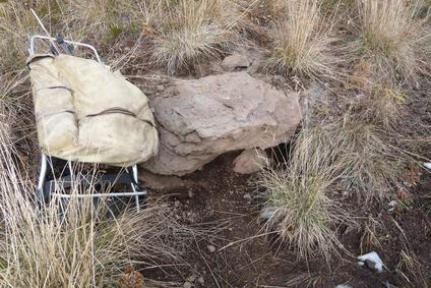

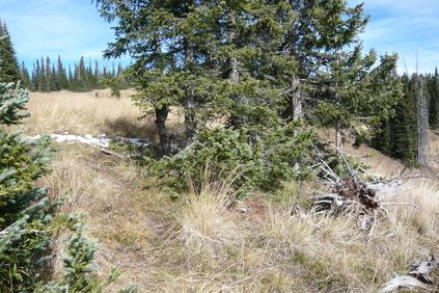
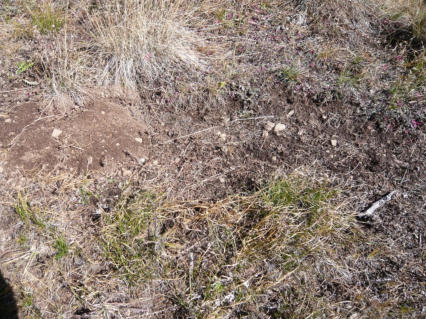
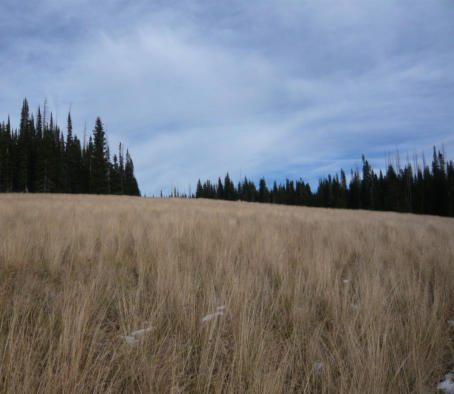
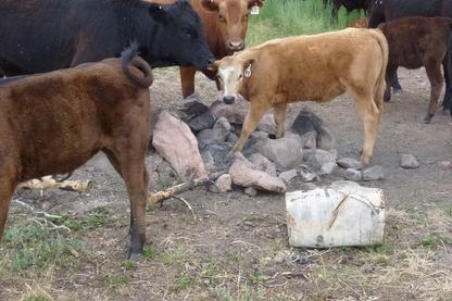

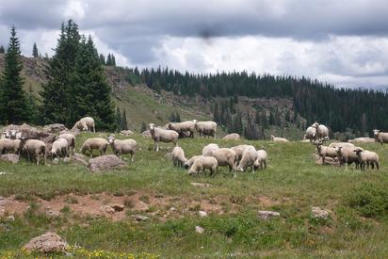
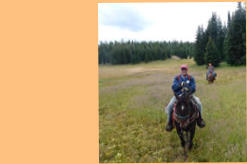

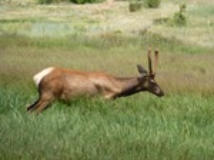
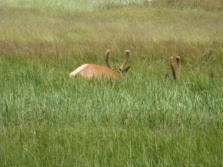
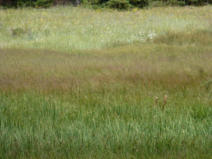

© 2014-2021 Copyright by P. K. H. Groth, Denver, Colorado, USA All rights reserved - See contact page for for permission to republish article
excerpts.
Early fall is the ideal
time to do final
scouting. The
Colorado high
country is ablaze in
nature’s glory.
Get out and enjoy
the crisp but still
warm days!
Live the wild!

© 2014-2021 Copyright by P. K. H. Groth, Denver, Colorado, USA All rights reserved - See contact page for for permission to republish article
excerpts.




- Hunter welfare
- Hunter poster child
- Altitude sickness
- Hunter heart attacks
- Hunter heart stress
- Altitude sleep problems
- Hunter spine/bone damage
- Back country hazards
- Man made hazards
- Hunter bear attacks
- Bear problems
- Mtn lion Awareness
- Insect problems and diseases
- Hunt camp rodent problems
- Game meat dangers
- Elk meat diseases


Scouting for Elk
Much of the elk hunting literature is just too general.
It is written to cover the entire United States.
However, there are several subspecies elk which live
in different environments and under markedly
varying human-changed living conditions. The
human influences change seasonally with ranching,
recreation, and several hunting seasons. Consider
whether you would hunt white tail deer in Texas
scrub land the same as in a Vermont forest. You
should not expect to hunt elk in a wilderness where
elk rarely see people in the summer the same as on a
working Wyoming ranch where elk become
accustomed to horse riders and activity? Animal
studies disclose that mechanized hunting affects elk
movement far from disturbances. Ignoring the
hunting environment in published articles is
paramont to setting eager hunters off on a wild
goose chase.
The following discussions supplement the elk
scouting section in my book.
Big Bull Lair Found While Scouting (2014)
Everybody wants to luck into a big Bull, but few want
to do arduous, time-consuming scouting. I green, first
growth grass to more dry, fibrous second-growth
grass. The branches the bull raked from the scrape
tree had hardened, butfound an excellent site this
year largely by using my nose. It was not hard to
identify where the bull had been, nor why he was
there. The location was NEAR the top of a large broad
funnel-shaped eastern facing slope void of trees.
From there the the bull to see bear and lion
predators who may have followed his scent trail up
the survival instinct-made diagonal elk path up the
hill (called a "J” turn maneuver). The branches the bull
raked from the scrape tree had hardened, Any rogue
elk bulls trying to cut out cows could be immediately
seen by the master bull. The location gave the herd
bull the advantage of charging down slope and
conserving energy for any fight. The high observation
post also permitted the bull to see bear and lion
predators who may have followed him up the
survival instinct-made diagonal elk path up the hill
(called a "J-Path).
Big Daddy's Scrape.
The location of the
scrape tree was ideal.
It was located on one
side of a bench
overlooking not only
the down slope, but
also along an upper
bench grazing and
bedding area for the
herd cows he wished
to monitor. The
scrape's five clumped
trees gave the bull shade for cool lingering. Shade is
critical to a bull. Because bulls have a greater body
mass, it is harder for them than cows to keep cool.
The trees also gave cover from predators.
Elk Treats.Have you ever noticed in hospitals the
food tends to be salty? Remember the doctors
advising you to drink lots of water when sick? A herd
bull spends a lot of energy taking care of the cows
that choose him, and running off interloper bulls. He
sweats much, and this eliminates water and salt from
his body. He needs to replenish both. Fifty feet from
the scape/stand trees was a recently well used sheep
herder salt lick. What a nice place to wait out the day,
get a few salt licks now and then, cuddle with a cow
in estrus, spar with the boys if necessary, and see his
cow bevy also come to his claimed salt lick. Sort of
like an iced beer cooler on a tailgate on a football
Sunday!
Substitutes Urine Wallows. In friable dirt just a few
yards from the salt lick was a bull urine pit. Bulls like
to "scent mark" themselves so all of creation can
identify them, and to mark their territory against
intruders. They usually dig new wallows in marshes
with their antlers to urinate in and then roll in, or use
old wallows left from previous years. However, where
there is insufficient water they urinate in the same
place. Soon the soil is soft and urine-saturated. The
bull then stomps in it and mish-mashes the mud like
an ancient brick maker. The first urine pit photo
shows the pit at this location with large bull elk hoof
prints. The second photo is a urine pit on a Wyoming
mountain where the lack of water makes wallowing
unfeasible without using the urine pit technique.
The urine pit was dead-ugly rank! At least 100 times
more offensive than a clogged urinal at the worst
truck stop. I smelled it perhaps 500-700 down-wind
yards away and "nosed in" on the site. I have no
doubt keen smelling elk could smell it a mile away. I
absentmindedly placed my backpack near the pit for
photo scale and could smell the odor for several
days. Why do I learn so slowly!?
When Was the
Bull at the
Scrape? Many
well-formed "pit
and cone" fecal
pellets littered the
ground around
the scrape tree.
(My observation is
that elk do not usually defecate immediately in their
beds.) This pellet type forms late in the summer
when elk transition from tender, green, first growth
grass to more dry, fibrous second-growth grass. The
branches the bull raked from the scrape tree had
hardened, but still had pliable pitch, and their
needles were green but beginning to yellow. The tree
scars were still slightly bleeding pitch. All these clues
indicated the bull had been here two to three weeks
ago, but generally healing pitch indicated recent
disuse.
Was this a Scrape, Urine Wallow, and Herd
Monitoring Station of a Herd Bull? I think so. The
bull-raked tree branches were from a good seven feet
above the ground. I picked up a handfull of scat. They
were hollow and the whole handful did not weigh
anything. They were unweathered and like styrofoam
balls. Obviously, this bull was in the exhausting part
of the rut and in the non-eating
mode. He was trying to exist on
a few morsels of bad grass and
water. He was basically
excreting gas-filled fecal shells.
However, cow pellets from the
area were of typical density. I
had no doubt this was a large,
dominant bull's lair.
A Trailside Feces Wonder: The
stack of droppings suggests a
very constipated bull who was probably exhausted
after defending his harem during the rut. (Why didn’t
the stack tip over when it landed? Another wonder of
nature, trajectory, and physics.)
Did I hunt the location? I hunted this immediate
area only one morning looking for a straggler cow.
One important aspect of game scouting is to monitor
the kills made by others. When I arrived for the
second season, I heard that an outfitter client had
killed a bull in the far side of the topographic funnel
during the first season. No mention was made of the
elk rack size, a give away that the bull had been
somewhat mediocre. It certainly was not the large
herd animal I expected from scouting. It must have
been a smaller bachelor bull that lingered in the area
after the main herd left. I deduced the bachelor bull
would not have moved into the harem bull's area if
the dominant bull was still there. I figured it was
better to hunt elsewhere.
Conclusion: So what happened this year to the herd
bull and almost all of the elk we would normally
encounter? his summer was very warm and had
frequent rains, especially in the early (high country)
fall period of August. Even by the second, late
October, hunting season the weather was the
warmest I've experienced in 42 years hunting this
area. Some nights the ground did not frost, and
never before did it actually rain at night. Although
there were typical brief day sleet and snow showers,
many days were shirt sleeve balmy. There was water
everywhere, so elk had no reason to wander in
search of it. The rut was probably early in this area.
There were signs of a few single and cow-calve paired
elk still present, but no signs of recently herded
animals. My deduction was that the elk were agitated
by the heat to the point that a few archers and
muzzle loaders (and a sheep herd) triggered them to
move during early seasons. The elk returned back
into the back country where deep timber offered cool
bedding and protection. The big fellow was smart
(and he himself rut and heat beat) enough to take his
harem back to elk black timber heaven.
Lots of Grass, But Why No Elk? Some grassy fields
look like prime elk habitat, but are not. Dense waist-
high grass like this would seem to be an ideal elk
forage location and a great place to hunt, but it is
not. Close examination of the grass revealed that it is
second growth grass. The grass tussocks were
chewed close to the ground in the spring when the
elk first migrated to high pastures. This is an eastern-
facing steep slope where the sun would have first
melted the snow and made new tender grass grow.
The elk left this area and headed to the high back
country for the summer. The second growth of grass
thrived in the late summer rainy period. While the
elk may have returned to the area with fall snows,
they are not going to eat this seemingly luxurious
fodder. It grew fast, is coarse and is low in nutrients.
It is a last resort winter meal.
Of Salt and an Obviously Hasty Retreat: We were
camped south of Wood’s Landing in northern
Colorado. Each night a group of cattle would stop at
an elk hunter’s old campsite and ravage the fire pit.
With a lot of head butting competition they
eventually licked the site clean of ashes and charcoal.
Then the cattle headed down slope to a spring to
satiate their salty mouths.
I’ll report anyone who baits game with salt. It is illegal
and not “fair chase” ethical. However, I do
recommend hunters become aware of all game
activities and movement habits by paying attention
to natural favored foods and nutrients. I check
hunter camps while backpacking in the summer. I
pick up any overlooked trash that may have been
snow covered when the hunters left. While doing
that, I’ve noticed that fire pits often don’t last more
than a couple of years before stones are rolled apart
and the ashes scattered. You can see an game-eaten
hole where the noodle water was dumped. Buried
trash is exhumed and scattered (that is why you
should always carry out all rubbish). Like the cattle,
game seeks mineral nutrients. Food scraps dumped
in the fire leaves salts. Check fire pits for game
activity when scouting. Try to determine which way
the animals travel in the immediate area and make
notes for the next hunting season.
I
surmise the elk hunter’s camp described above was
sloppy. The hunters must have been fire-reckless and
inattentive. It appeared that a fairly large forest fire
started when the fire escaped the fire ring. The
dudes must have made rapid retreat to avoid
detection; they left things - including a lovingly made
fancy latrine, tow straps and some tools.
Scout Slowly: Elk can be hard to see if the wind is
in your face and the elk are lounging midday. It
would be easy to overlook these two fellows with
a too quick binocular scan.
Scout Elk as if You Were Looking for Ghosts
I call elk the ghosts of the forests. You don't think
they are present, then all of a sudden they silently,
mystically appear. These photos illustrate how easily
two bull elk can hide and then appear. They could be
overlooked by a swiftly moving hunter scout as they
lay midday in their wallows.
Some highlights of my stay made my scouting and
high altitude acclimation days happy. Two very
discouraged young lads asked me where to hunt. I
told them to be down to buck creek at 4 PM where a
thicket of alder crosses the stream. Any remaining
bulls would creep out of timber-hiding to water early
in the hot weather. I was hosting a sheep wagon
dinner for two veterans (one hunts on a tracked
wheel chair) when there was a rapping on the widow.
A very be-spattered, grinning lad said “Thank you,
thank you! I was there later than you said to be. I saw
that a hunter beat me, since there was a horse tied in
the willows. Then it moved and some of the branches
moved with it head. Thanks for the 5X5 – my first
elk!” It could not get better for me to hear his
enthusiastic thanks. [The young fellow will probably
grow old there for the next twenty years of 4PMs.]
Scout for Elk
While Hunting
Bear "With"
Sheep Herders
Bear and
mountain lions
are multiplying
in the Flat Tops
and other areas around the United States. You may
want to consider scout for elk in the early fall with a
bear license in hand. Ask locals about predator
situations. They are often bothered by bear and are
helpful in pointing out rouges. An excellent and
commonly overlooked helpful bear information

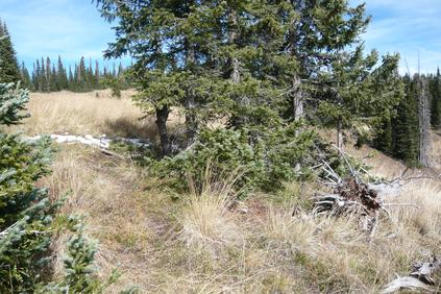
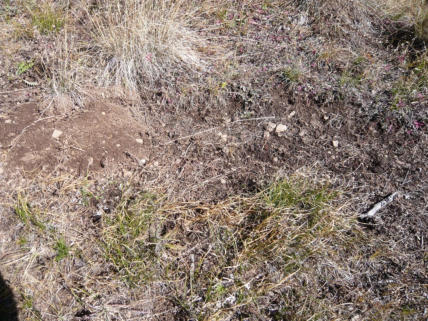
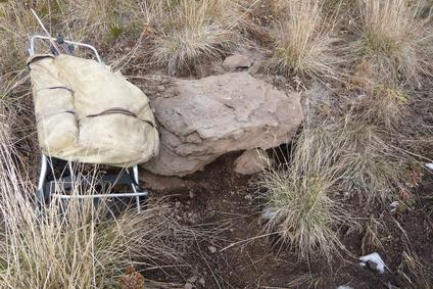
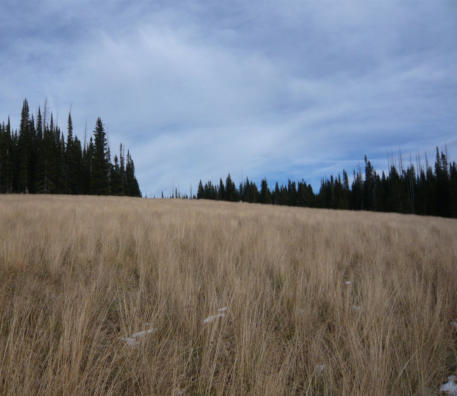

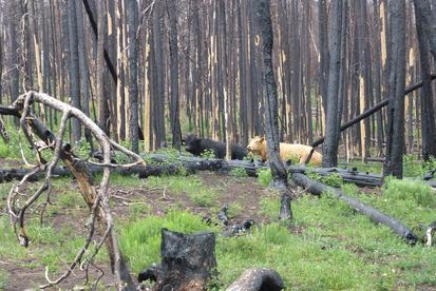
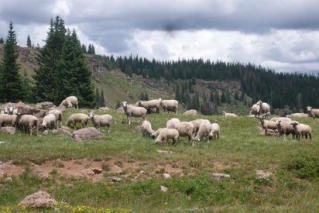

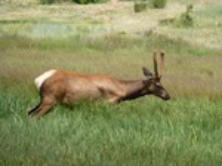

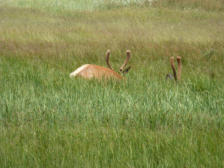

© 2016 -2021 Copyright by P. K. H. Groth, Denver, Colorado, USA All rights reserved -
See contact page for for permission to republish article excerpts.
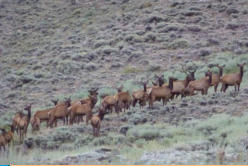
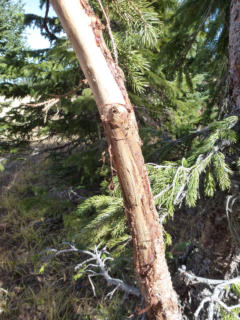
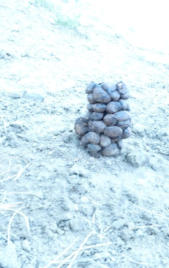


- Hunter welfare
- Hunter poster child
- Altitude sicknesses
- Hunter heart attack
- Hunter heart stress
- Altitude sleep problems
- Hunter spine and bone injuries
- Back country hazards
- Man caused hazards
- Bear attacks
- Bear camp problems
- Mountain. lion awareness
- Insect diseases and problems
- Camp rodent problems
- Game meat dangers
- Elk diseases

























